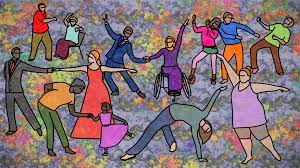Introduction to the World of Dance
Dance is one of the most compelling forms of communication and artistic expression. It reflects the intricate tapestry of cultures across the globe, acting as a bridge that connects diverse communities. Every culture embraces its unique dance style, yet all share the common language of movement. Today’s fascination with dance classes isn’t just due to its aesthetic appeal and capacity to engage both mind and body. Participants often find themselves enthralled by the rhythms and patterns, which provide a refreshing escape from daily life’s hustle.
The historical journey of dance is vast, evolving alongside civilizations. From ancient religious ceremonies where dance was a medium to communicate with deities to modern-day concerts that turned into massive dance festivals, the essence of dance remains unchanged. It’s a celebration of life, emotions, and stories. As people come together to dance, they engage in an age-old tradition, continually reshaping its form and purpose.
Physical Benefits of Dancing
Dancing is more than just entertainment; it is an excellent way to stay fit and healthy. Participating in different dance styles provides a complete workout that improves muscle strength, endurance, and flexibility. Studies have shown that dancing can enhance cardiovascular health, making it an enjoyable alternative to traditional exercise routines. If you’re interested in learning new moves, look for a dance lesson near me to get started. Whether salsa, hip-hop, or ballroom, dance classes offer a fun and engaging way to improve your fitness and coordination.
Beyond the apparent benefits of cardiovascular health and muscle tone, dancing also significantly enhances balance and coordination. Dancers often experience a marked improvement in agility and reflexes, attributes beneficial not only on the dance floor but in other daily activities. When you engage in dance, every movement works synchronously to create a holistic wellness experience, leaving participants with a sense of accomplishment and well-being.
Dancing for Mental Health
The rewards of dance are not confined to physical well-being alone; it offers ample mental healthbenefits. Dancing promotes the secretion of endorphins, crucial in mitigating stress and easing anxiety. The immersive nature of dance allows individuals to focus solely on the rhythm and motions, providing an effective means to escape life’s stresses momentarily.
Furthermore, dance acts as an expressive outlet. It allows individuals to explore and confront emotions through movement. As dancers navigate different styles, from ballet’s elegance to hip-hop’s intensity, they find expressive freedom. This freedom can lead to a cathartic release of emotions, often resulting in improved mental clarity and emotional health.
Dance as a Social Connector
Dance naturally brings people together, fostering a sense of community and belonging. Whether through organized dance classes or impromptu social gatherings, dance provides an inclusive environment where individuals can connect through shared joy and activity. The social aspect of dance promotes camaraderie and builds lasting relationships.
Group dances and collaborative sessions enhance social skills, generating a welcoming space for people of all backgrounds to mingle. According to insights from Psychology Today, dance activities often serve as social facilitators, helping individuals overcome shyness and develop communication skills. These invaluable interactions offer personal growth and a broader sense of community.
Expressing Creativity Through Dance
Dance is inherently creative, offering a platform for limitless expression. The varied dance styles available today, from jazz’s vibrancy to modern dance’s fluidity, cater to a wide range of tastes and preferences. Each style provides a unique opportunity for dancers to express themselves and explore new realms of creativity.
This creative pursuit allows dancers to convey narratives through movement, transforming their personal experiences into compelling performances. It also helps bolster self-confidence as dancers interpret and project their artistic visions to audiences. As individuals delve deeper into dance, they often discover new facets of their artistry, reflecting stories, emotions, and raw human energy.
The Cognitive Perks of Learning Dance
Beyond creative and physical growth, dance supports cognitive development. Learning and recalling dance steps exercise the brain, enhancing memory, spatial awareness, and problem-solving skills. This cognitive engagement is akin to mental gymnastics, providing a dynamic way to maintain and improve cognitive functions.
Research has indicated that dancers frequently enjoy sharper problem-solving skills and better memory retention. Engaging with complex choreographies and adapting to spontaneous improvisations challenges the mind, keeping it active and healthy. Dance’s cerebral nature reaffirms its status as an activity with multifaceted benefits.
Dance for All Ages and Abilities
Dance inclusivity extends to people of all ages and abilities. It provides a means for young children to channel their abundant energy creatively while offering older adults a gentle way to remain active and improve balance. Dance is designed to cater to individuals with diverse physical abilities through specially structured classes, guaranteeing that all participants can experience its many advantages.
For seniors, dancing offers a social and physically engaging activity that encourages sustained mobility. Adaptations such as seated dance routines make dance accessible to individuals with limited mobility, emphasizing its universal appeal. Ultimately, dance champions inclusivity, ensuring that everyone can share in its joy.
Conclusion: Dancing into a Happier Life
As we’ve explored, dance offers many physical, mental, and emotional benefits. Dance answers the call whether you’re seeking a new hobby or a comprehensive way to enhance your lifestyle. It presents an energizing path to a healthier, happier existence, brimming with creativity and social connection. Why not embrace dance, make it part of your everyday life, and experience the myriad of joys it promises?






